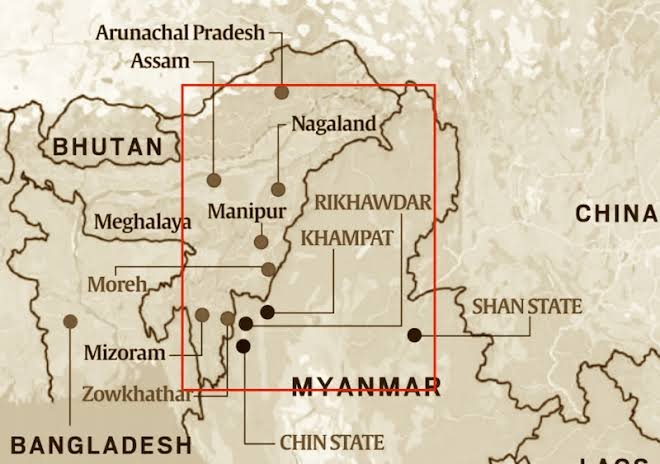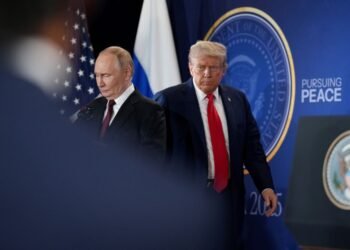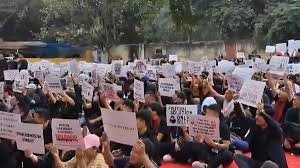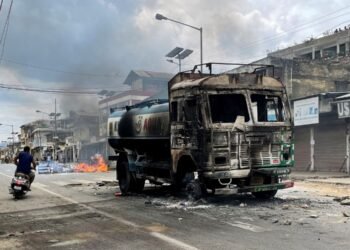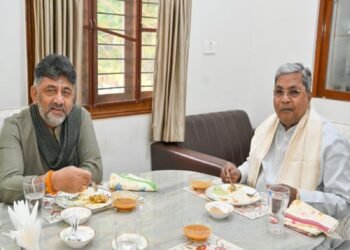The precision strikes have reportedly decimated joint insurgent camps used by ULFA-I and multiple Manipur-based outfits in Myanmar’s lawless borderlands. Analysts say this could be a crippling blow to their logistical backbone, training pipelines, and morale, forcing these groups to rethink cross-border operations under India’s evolving military doctrine.
By Navin Upadhyay
New Delhi
July 13, 2025: The Indian Army’s reported drone strike targeting United Liberation Front of Assam-Independent (ULFA-I) camps in Myanmar’s Sagaing Region has sent shockwaves through the insurgent networks of Northeast India. Intelligence sources suggest that the high-precision operation, not only inflicted serious damage on ULFA-I, but also sent a strong message to Manipur’s valley-based insurgent groups, such as the United National Liberation Front (UNLF), People’s Liberation Army (PLA), People’s Revolutionary Party of Kangleipak (PREPAK), Kanglei Yawol Kanna Lup (KYKL), and Revolutionary People’s Front (RPF).
According to top intelligence officials in New Delhi, the drone strike targeted key ULFA-I strongholds including the Eastern Command Headquarters at Hoyat Basti and the 779 Camp in Waktham Basti—facilities believed to be jointly used by multiple insurgent outfits for training, arms storage, and logistical operations. The strike reportedly killed at least three ULFA-I commanders and possibly Lieutenant General Nayan Asom, the group’s military strategist.
READ: Who Was ULFA’s Top Gun, Feared Killed in India’s Strike in Myanmar?
“These camps function as joint facilities,” a senior intelligence official said. “ULFA-I, UNLF, PLA, KYKL, and others use them to train, stockpile weapons, and plan operations. This attack has disrupted a shared insurgent ecosystem.”
Shared Infrastructure and Strategic Alliances
Since Bhutan’s 2003 Operation All Clear, which flushed out ULFA and allied groups, the forests of Myanmar’s Sagaing Region have served as a critical rear base for northeastern insurgents. The 2021 military coup in Myanmar created a vacuum that allowed these outfits to re-establish sanctuaries. ULFA-I has historically acted as a key facilitator—offering cross-border movement, arms procurement through ties with groups like the Kachin Independence Army (KIA), and joint training with Manipur-based groups.
Headquarters of ULFA, NSCN(KYA) along with CORCOM( PLA, PREEPAK, KCP) at Nayang, Haukyat and Taga were destroyed . These camp use to shelter terrorists from various insurgents group of NE sponsored by China and Pakistan.
ULFA, NSCN, PLA, PREEPAK etc etc …..wake up darlings… pic.twitter.com/sQDL1RPvNf
— Maj Digvijay Singh Rawat, Kirti Chakra (@Dig_raw21) July 13, 2025
Informed sources pointed out that this long-standing cooperation was evident in the 1989 formation of the Indo-Burma Revolutionary Front (IBRF), which included ULFA, UNLF, and NSCN-K. In 2015, ULFA-I, NSCN-K, KLO, and others announced the United National Liberation Front of Western South East Asia (UNLFW), with Manipuri groups reportedly involved in its formation. ULFA-I’s own past interactions with UNLF’s armed wing, the Manipur People’s Army (MPA), include joint operations—such as a 2002 ambush in Assam’s Cachar district executed by UNLF on ULFA’s request.
A New Phase in India’s Cross-Border Doctrine
The July 13 strike represents more than retaliation—it is a demonstration of India’s evolving counter-insurgency doctrine, which now includes extraterritorial preemptive action. Using satellite intelligence, intercepted communications, and drone warfare, Indian forces have shown they can neutralize high-value targets deep inside hostile terrain.
“Myanmar’s internal chaos post-coup has left its border regions largely ungoverned,” noted one security analyst. “India has decided it can’t wait for cooperation—it will act unilaterally when necessary.”
The urgency behind such operations is growing. ULFA-I planted 24 IEDs in Assam in August 2024. Manipur remains on edge amid continued ethnic and insurgent violence. Meanwhile, the fall of Sheikh Hasina’s government in Bangladesh and the return of a BNP-led regime with historical ISI ties raises concerns that cross-border havens for insurgents may reopen in the west as well.
A Turning Point for Manipur’s Insurgents
The loss of Myanmar-based camps and ULFA-I’s leadership may force Manipur’s insurgents to rely more on local support networks, risking further alienation of civilians exhausted by years of conflict. With fewer options for cross-border refuge and a resurgent Indian security apparatus willing to strike far from home, the path ahead for outfits like PLA, KYKL, and PREPAK is narrowing.
READ: ULFA-I Admits Heavy Losses in Indian Drone Strike on Myanmar Camps
“This is a wake-up call,” said an official in the intelligence community. “Their resources are dwindling. India’s message is unmistakable: if you operate against the state—even from across the border—we’ll find you.”
Despite past collaborations, longstanding rivalries remain. UNLF’s ideological opposition to NSCN-IM’s “Greater Nagalim” agenda has sparked conflict in the past. KYKL’s role in the assassination of UNLF’s founder further highlights how internal fissures could now deepen as groups reel from the loss of shared infrastructure and key allies.
As Indian forces sharpen their edge and regional dynamics shift—with Bangladesh’s political realignment and Myanmar’s ongoing anarchy—the Northeast insurgency may enter a period of forced transformation. Whether it leads to further radicalization, fragmentation, or a push for peace will depend on how insurgent leadership responds in the coming weeks.
For now, one thing is clear: the rules of engagement have changed, and foreign soil is no longer a guaranteed sanctuary.
READ: Indian Army Unleashes Deady Attacks on ULFA-I Camps in Myanmar, Kills Top Commander


